Global social media research summary 2016
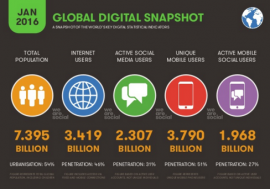
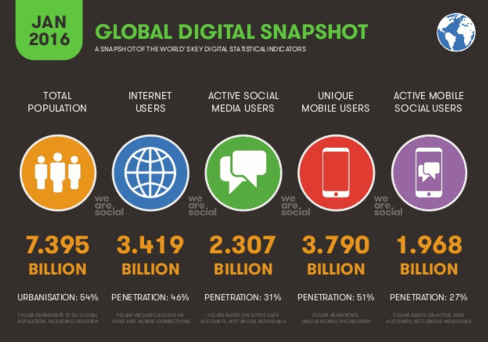
Our compilation of the latest social media statistics of consumer adoption and usage
Social networks are now so well established, that there are now a core ‘top 5’ social networks which are most popular which doesn’t change from year-to-year. But, as we’ll see in this post, the most popular social media sites vary a lot by level of usage in different countries and with demographics. So understanding these differences in popularity of different social networks is really important when targeting specific audiences. When comparing the most popular social networks it’s best to review them by active account usage, not just the number of user accounts. We’ll also see in this summary that some social networks are growing more rapidly than others while some are now in decline.
February 2016 social media stats update
We’ll keep this post updated during 2016 as the latest statistics are published drawing on our recommended top 10 digital marketing statistics sources. In this first update of the year we highlight the great summary of social media and mobile stats from WeAreSocial Singapore, which is mainly extracted from GWI who they partner with.
For statistics on the social network usage and growth we recommend Global Web Index (GWI) as one of the most reliable research sources of social media statistics to compare consumer use and engagement across different social networks. Research is conducted in quarterly waves, each of which has a global sample size of more than 40,000 internet users. Many other social media research programmes are no longer active. Although Global WebIndex are a paid subscription service, their blog provides useful insights on digital consumer behaviour and the Global Web Index Slideshare gives the latest top-level summaries which we share later in this compilation.
Each year, We Are Social update their massive global compendium of stats which gives some great insights into the world of social media. It’s a great download for presentations. It’s particularly interesting how far some countries are diverging in terms of social media use, and surprising that Western Countries are actually lagging a fair way behind in adoption rates.
Annual growth continues apace, particularly in the number of mobile social users, which hit 17% last year.
Asia-Pacific is driving much of this growth, which internet usage rates high and number of active social media users increasing 14% on the year before.
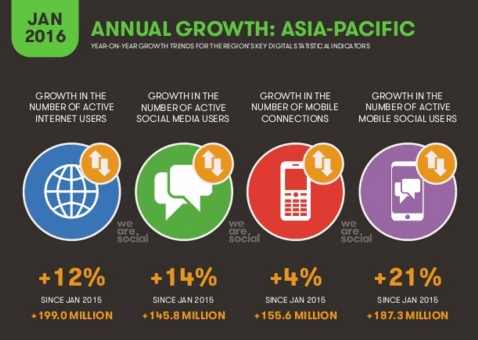
When looking at the world by number of internet users, it really rams home the importance of East Asian and South Asian markets. Digital offers new opportunities to reach these people, although as always cultural differences are considerable challenges to international marketers.
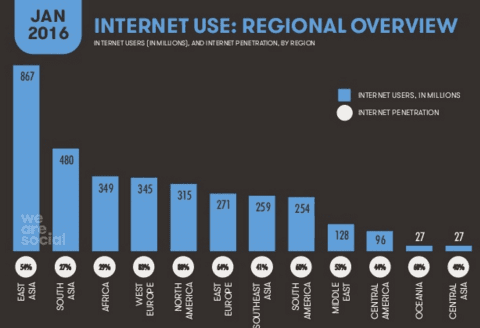
The full report from we are social contains a massive amount of data across 537 slides. It provides country-specific data for a the vast majority of the world, so you might want to check out the slides of the countries in your core markets to get a better idea of the current state of social in the areas you operate.
October 2015 update – US Social media adoption
US consumer technology adoption specialists Pew Research Center released a new set of data on US Social Media US on October 8th which shows the latest social media trends and how far it has permeated society. Looking at data from the past 10 years, it charts the meteoric rise of social media.
10 years ago on 7% of the US population used one or more social networking sites. Now that figure has increased almost tenfold, to 65%. Of those who use the internet a massive majority of 76% of American’s use social media.
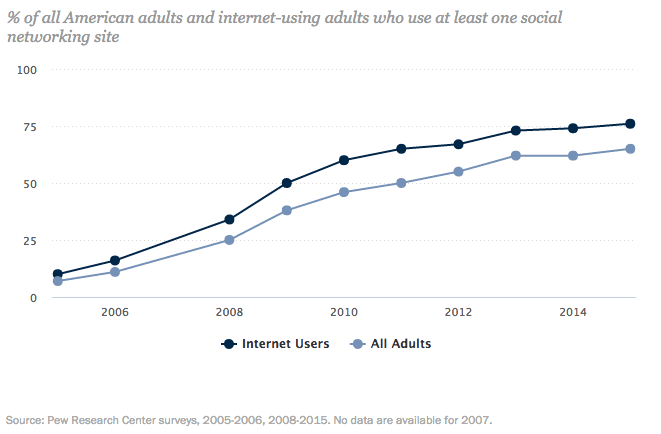
Social Media has grown massively, but it’s growth is now starting to plateau. Interestingly the over 65s segment are now driving growth, as other age groups have plateaued completely and use is hardly growing it all. Among the 50-63 age cohort, use hasn’t increased since 2013.
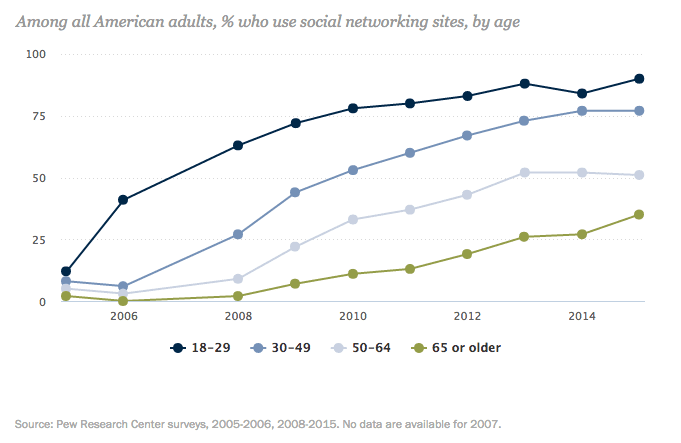
The most popular social networks worldwide in 2015?
Here is the latest Global Web Index summary in January 2015 (the most recently published) showing social network account ownership and active usage. It’s useful to have both since it’s the active social media use statistic which really shows the potential of a platform. Although Facebook is no longer growing at the rate it was based on the previous chart, its clearly the number one.
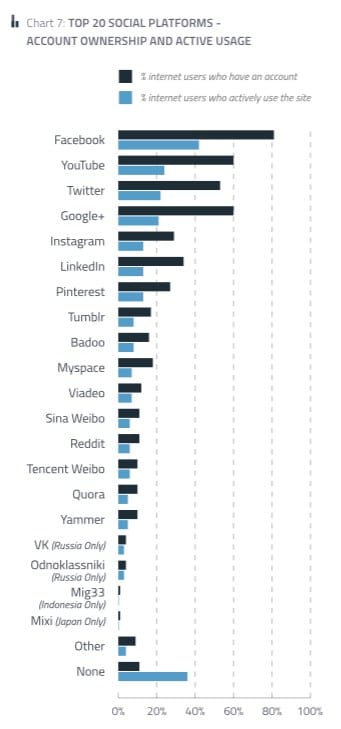
The popularity of Facebook, Twitter and Instagram are expected. You can see that Facebook is most popular in terms of active use – other charts in the report show it scores well in terms of frequency.
The ongoing importance of the Google social platforms YouTube and Google+ may be a surprise since Google+ is no longer actively promoted, but they are integrated into their unified account sign-in.
Social network popularity by country
This is a great visualisation of the popularity of social networks based on the interviews in the GWI report. If you pick out your country it’s probably way behind the countries in which these four core social networks are most popular. Indonesia, Philippines, Mexico, India and Brazil are in the top 10 for each with significantly higher levels of use than the US, UK and European countries.
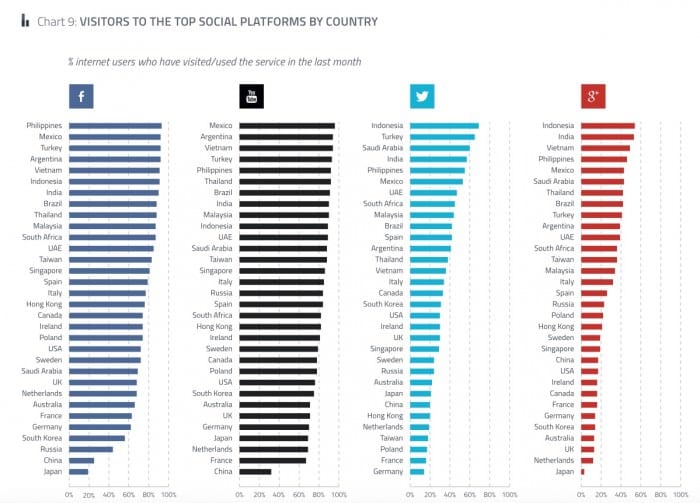
The fastest growing social networks?
Which are the fast growing networks? Well, through 2014 Pinterest, Tumblr, Instagram and LinkedIn had the biggest growth, so we can expect this has continued into 2015. So, if you’re not actively using these networks for marketing, this could be a missed opportunity. This chart doesn’t show Reddit, which is another network that is growing rapidly.
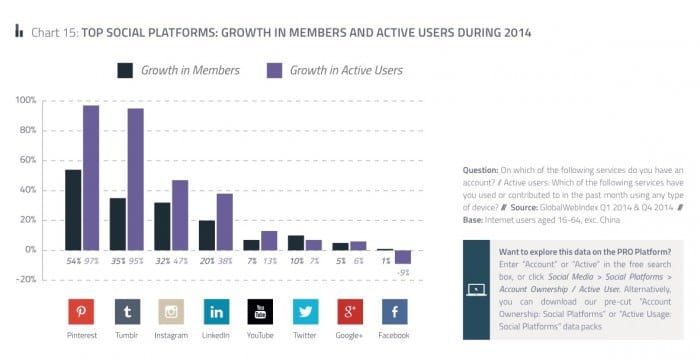
Use of social networks by different demographics
This chart is striking for the similarity of usage across different age groups. It shows that the social networks are now at a stage of maturity where they give opportunities to reach all age and gender groups. The exceptions to this are Instagram and Tumblr which are clearly popular with younger age groups.
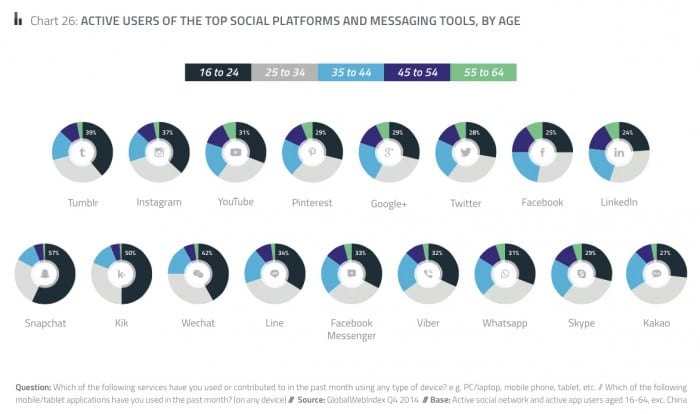
From our sponsors: Global social media research summary 2016



